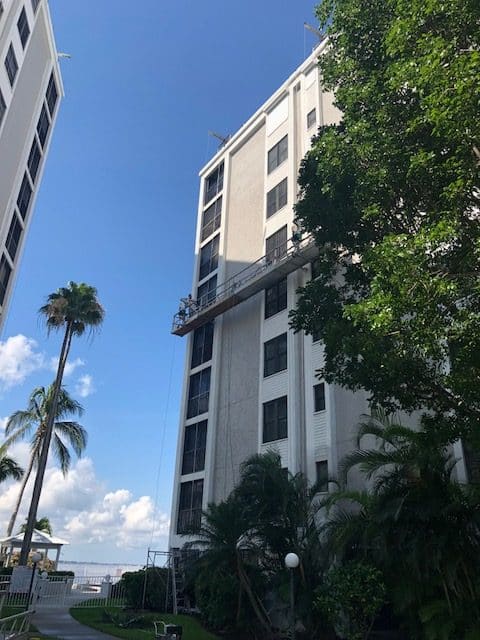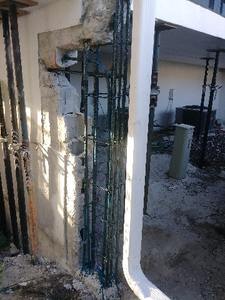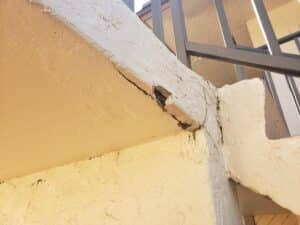Maintaining the concrete structures in condo and HOA buildings is crucial for both safety and aesthetics. Concrete is a strong and durable material, but it’s not immune to wear and tear. Over time, various environmental factors and heavy use can lead to common issues like cracks, spalling, and surface wear. Addressing these problems promptly can prevent more extensive and costly repairs down the line.
By understanding the common problems that can affect concrete in these settings and knowing how to fix them, property managers and owners can ensure that their buildings remain in excellent condition. Using the right tools and materials for repairs is essential for achieving long-lasting results. Preventive maintenance also plays a key role in prolonging the life of concrete structures. Regular inspections and timely repairs are the cornerstones of effective concrete maintenance strategies.
In this article, we will explore the common problems that affect concrete in condo and HOA buildings, the essential tools and materials needed for repairs, a step-by-step guide to concrete restoration, and preventive maintenance tips to keep concrete in the best possible condition for years to come.
Identifying Common Concrete Problems in Condo and HOA Buildings
Concrete is a strong and reliable material used in many condo and HOA buildings, but it is not immune to problems. One common issue is cracking. Cracks can appear due to various reasons, such as temperature changes, settling, or overload. Small cracks might seem harmless, but they can widen over time and lead to more severe damage if not addressed promptly.
Another frequent problem is spalling, where the surface of the concrete flakes or peels away. This often occurs due to freeze-thaw cycles or exposure to chemicals like salt. Spalling can weaken the structure and lead to safety hazards if not repaired. Water penetration is also a significant concern, as it can cause corrosion of the reinforcing steel within the concrete, leading to structural issues. By identifying these problems early, we can take the necessary steps to fix them and prevent further damage.
Essential Tools and Materials for Concrete Repair
Proper concrete repair requires specific tools and materials to ensure the job is done right. First, we need a hammer and chisel to remove any loose or damaged concrete from the affected area. This step helps in preparing the surface for a durable repair. A wire brush is also essential for cleaning the surface, ensuring that no debris remains that could affect the bonding of the repair materials.
Some of the key materials include a high-quality concrete patching compound and a bonding agent. The patching compound fills the cracks and holes, while the bonding agent ensures that the new material adheres well to the existing concrete. A trowel is used to apply and smooth the patching compound, making the surface even. Additionally, a concrete sealant is necessary to protect the repaired area from moisture and further damage. Having the right tools and materials makes the repair process efficient and effective, helping to restore the concrete to its original condition.
Step-by-Step Guide to Concrete Restoration
Restoring concrete involves several important steps to ensure the repair is effective and long-lasting. First, prepare the area by cleaning it thoroughly. Use a hammer and chisel to remove loose concrete, and a wire brush to clear away debris. Cleaning helps the new material bond well with the old surface.
Next, apply a bonding agent to the prepared area. This helps the patching compound stick better. Mix the concrete patching compound according to the instructions on the package. Use a trowel to fill in the cracks or holes, and smooth the surface until it is level with the surrounding concrete. Allow the patch to dry completely. Once dry, apply a concrete sealant to protect the repaired area from future damage. This process helps restore the strength and appearance of the concrete.
Preventive Maintenance Tips for Long-Lasting Concrete
Preventive maintenance is crucial to prolonging the life of concrete in condo and HOA buildings. Regular inspections are essential. Check the concrete surfaces at least twice a year for signs of cracks, spalling, or water damage. Early detection of these issues allows for prompt repair, preventing them from becoming major problems.
Another important aspect of preventive maintenance is keeping the concrete clean. Dirt, debris, and chemical residues can damage the surface over time. Pressure wash or use a mild cleaning solution to remove any build-up. Additionally, apply a sealant every few years to protect the concrete from moisture and environmental elements. Sealing helps prevent water from penetrating the surface and causing internal damage. By following these tips, you can ensure that your concrete remains durable and aesthetically pleasing for years to come.
Conclusion
Maintaining and repairing concrete surfaces in condo and HOA buildings is crucial for their longevity and overall appearance. By identifying common problems early and using the right tools and materials for repairs, we can keep the concrete in good condition. Regular preventive maintenance plays a significant role in prolonging the life of concrete, making it essential to follow the recommended tips and practices.
At McLeod’s Contracting Solutions, we are committed to helping you with all your concrete maintenance and repair needs. Our team of experienced professionals is here to ensure that your concrete surfaces remain strong and visually appealing. If you require expert concrete restoration and repair services, contact McLeod’s Contracting Solutions today to schedule an inspection or to learn more about our comprehensive services.







